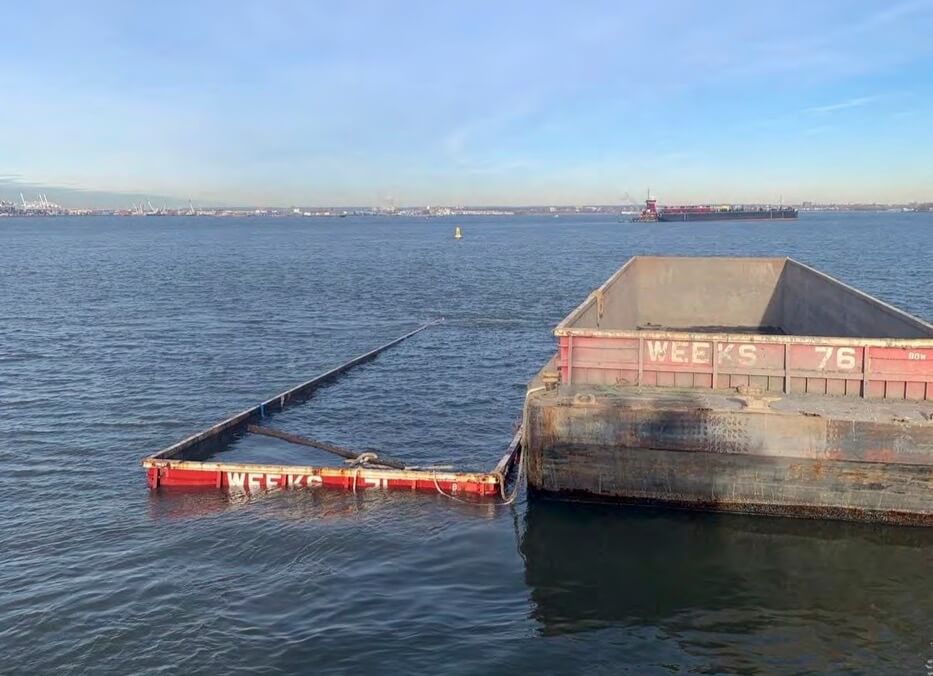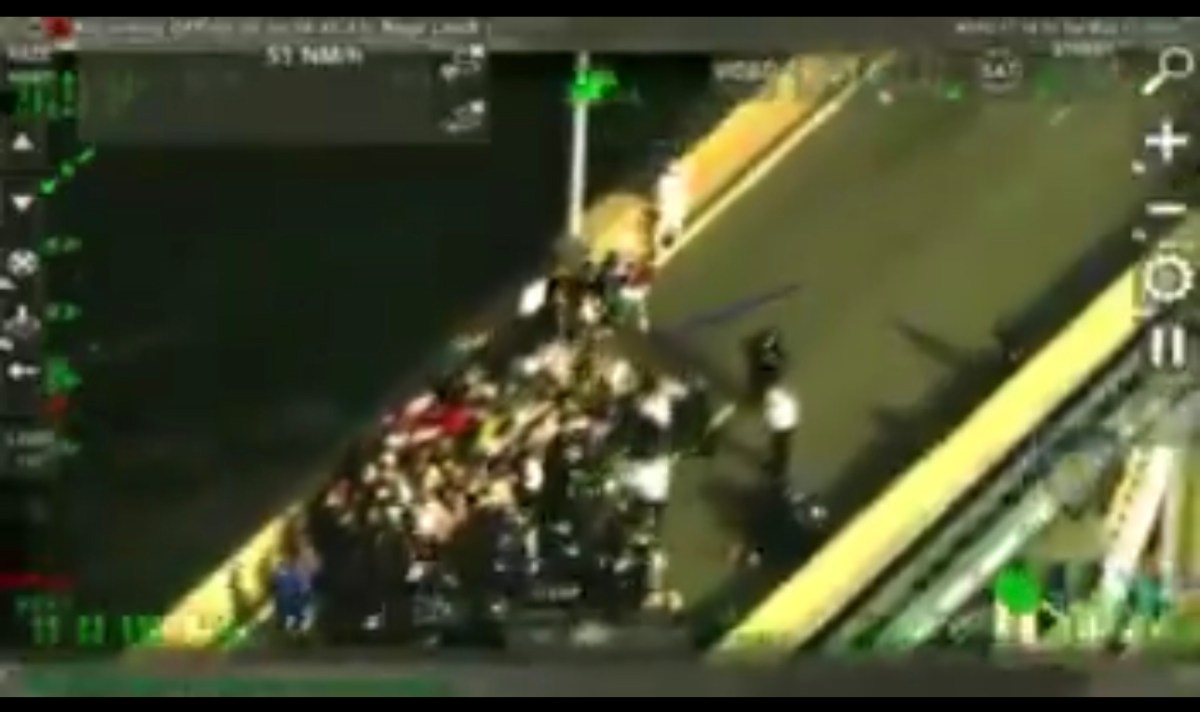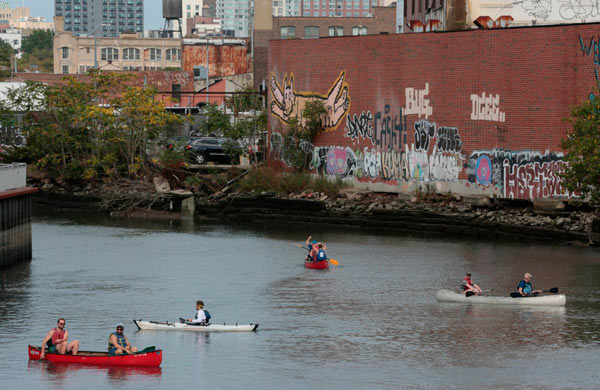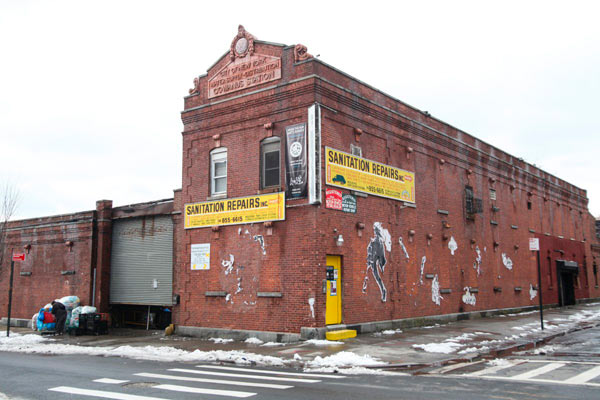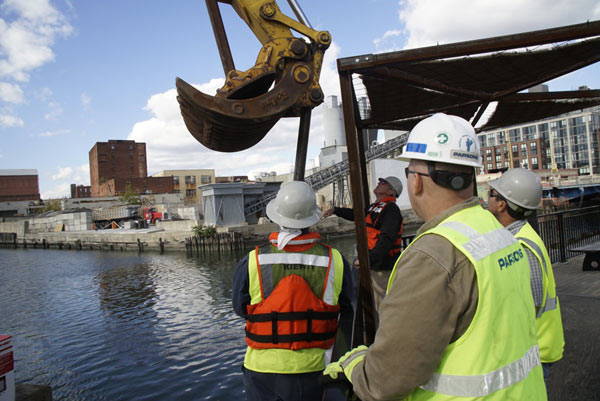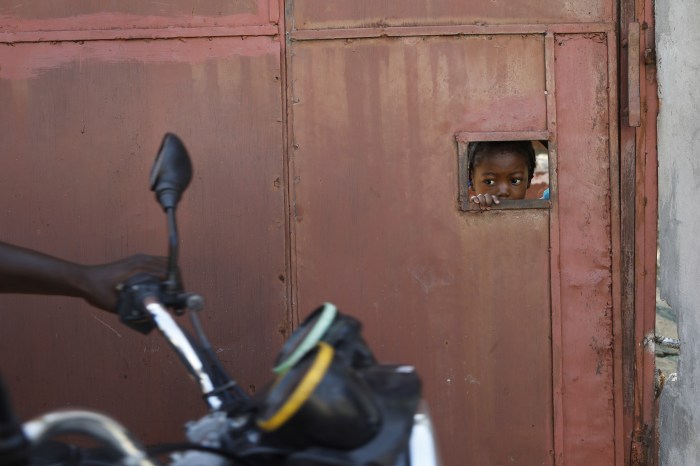A barge carrying more than 1,000 tons of polluted sediment from the Gowanus Canal that sank late last month became submerged because of a gash at its side, according to a report of the incident released by the Environmental Protection Agency Wednesday.
The 2-foot gash on the port side of the hull was likely caused by metal sticking out from the barge’s dock in New Jersey, however, little if any of the muck laced with toxins was released into the sea, an agency rep said.
“Based on calculations on the barge contents once it was refloated and berthed back at the canal, EPA has concluded that material released from the barge, if any, was minimal,” said Stephen McBay in a statement on Feb. 10.
The report by Massachusetts-based contractor Cashman Dredging details the sumbersion of the barge named Weeks 71, which slowly sank while moored in a shoal area of the harbor called the Bay Ridge flats on the weekend of Jan. 22.
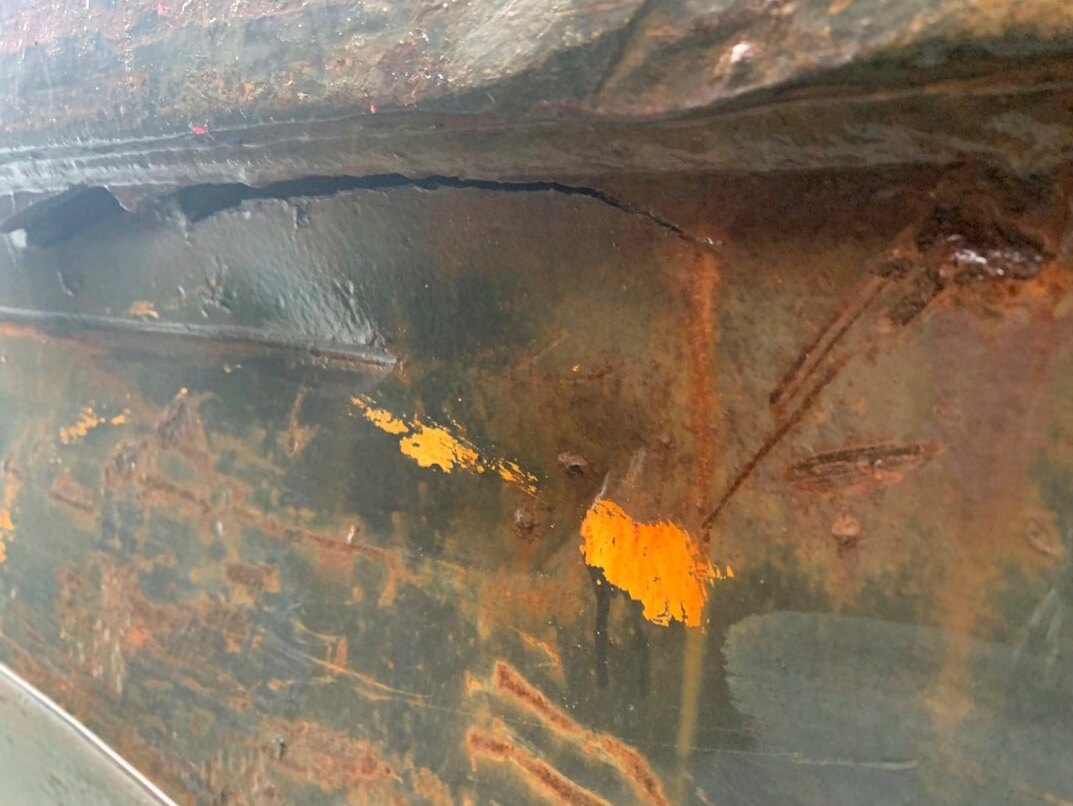
Workers loaded the boat with 1,058 tons of material pulled from the bed of the fetid Gowanus Canal that Friday and were ready to ship it to a Jersey City treatment site operated by a company called Clean Earth.
A previous report by the contractors erroneously said there were 850 tons aboard, however there were in fact 850 cubic yards of material, about the volume of just over 4,000 bathtubs.
Due to unexpected docking restrictions in the Garden State, Cashman moored the vessel on the flats for the weekend, when wind and choppy seas caused its ballast compartment to fill with water and eventually submerge at its stern down to 2 feet below water at high tide, resting on the bottom of the shallow area.
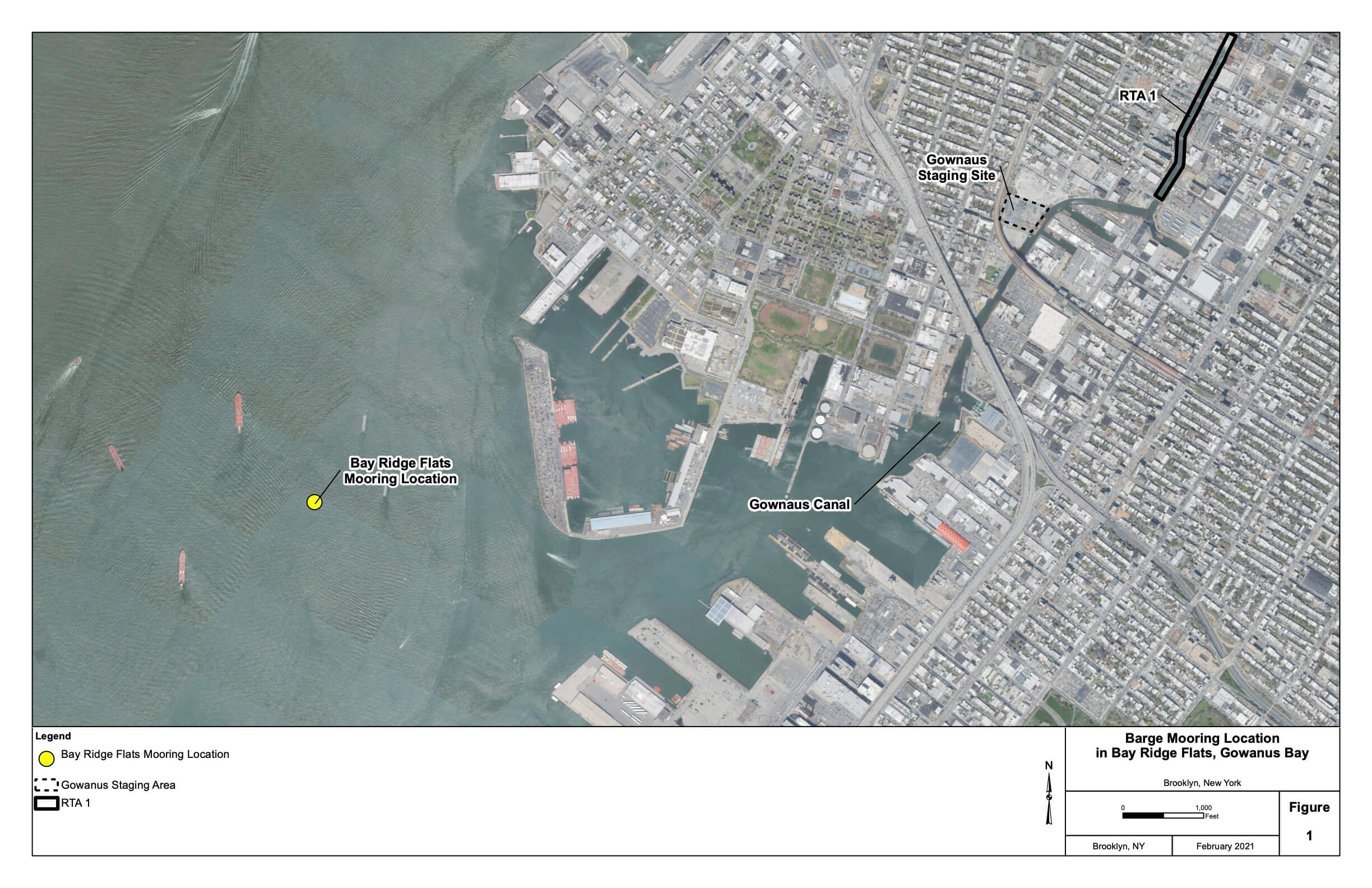
Crews for the contractor discovered the sunken ship Monday morning, Jan. 25, and dispatched a team to pump the water onto two other barges, Weeks 76 and 73, for some six hours, while also temporarily patching up the hole, before bringing it back to the Canal Superfund Cleanup’s staging site at Huntington and Smith streets.
Cashman later shipped the broken barge to its Staten Island facility for permanent repairs, according to the report.
Even though the barge was submerged fully during high tide, inspectors believe that little if any of the toxic soil seeped into the water, given that they measured roughly the same volume of material before and after the incident, and because lighter debris from the Gowanus like soda cans and small pieces of wood remained in place atop the muck.
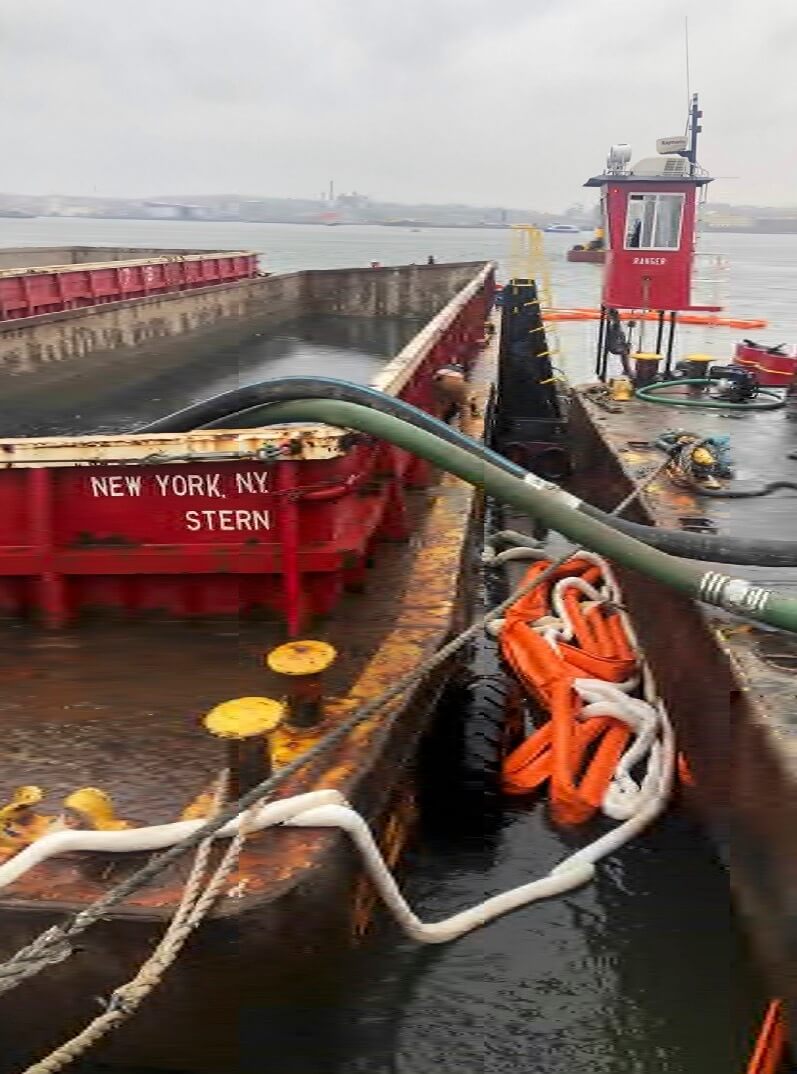
Workers at the site also couldn’t see any suspicious sheens on the water when they found the boat, and they said the water around it was “clean and clear.”
Inspectors found similar damage on Weeks 73, which led them to believe that the gashes came from a docking site.
At the New Jersey treatment site, Cashman found protruding steel and bulkhead piles unprotected by tire fenders, which they believed caused the damage in both barges.
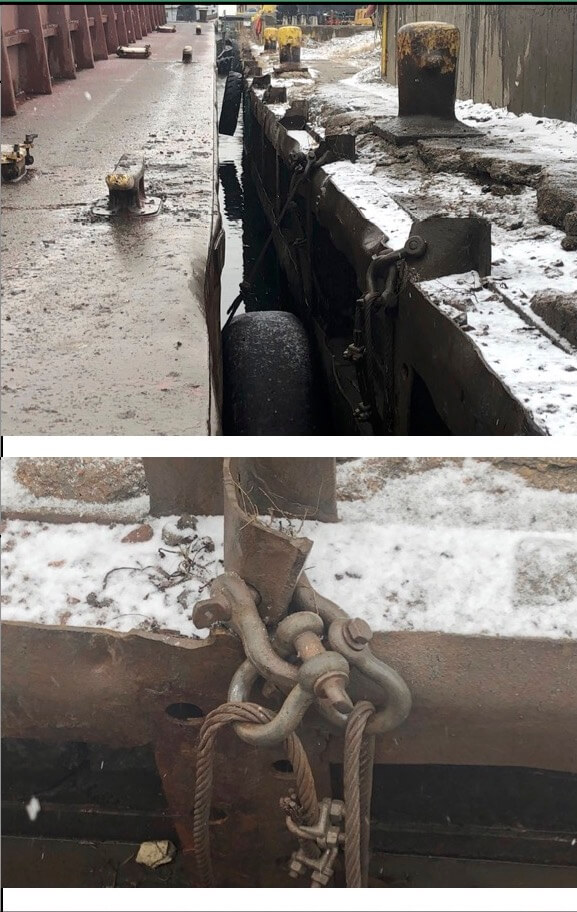
Under direction of the EPA, the contractors had to install fenders at the docking facility and add third-party inspectors of all barges prior to them being used. Cashman said it will also improve its own inspection process. If a boat is moored away from the canal, a tug boat will monitor it and be ready to respond to any issues, according to the report.
The contractor will also look for mooring sites that are less exposed to bad weather and work with Clean Earth so that there’s always space for them to dock on the New Jersey side.
Dredging of the canal halted in order to investigate and address the incident, but the cleanup has since resumed, McBay said.


